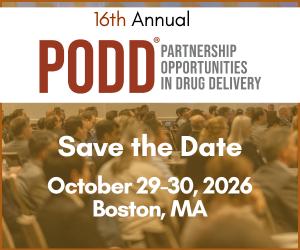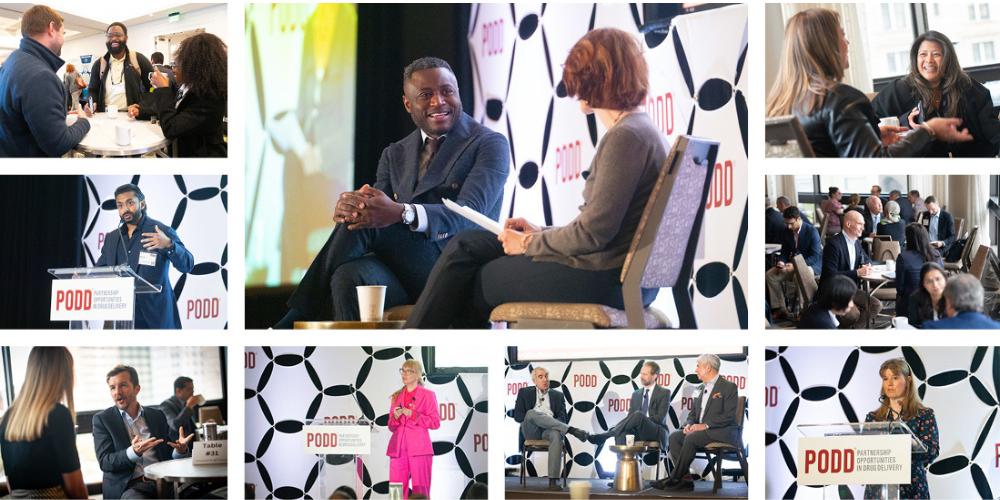Sun Pharma on Evaluating Drug Delivery Technology Platforms and Suppliers for Partnerships
Satyashodhan Patil, Sun Pharma’s Deputy General Manager (R&D) – NOSD and Device Development, discusses how the company studies the market and evaluates potential partners for patient-centric drug device combination product development.

At Sun Pharma, what do you lead in the drug delivery space?
I lead drug delivery device development ranging from pen injectors, autoinjectors, pre-filled syringes, nasal sprays, inhalers, ophthalmic devices, implantable drug delivery devices, applicators, etc for different therapeutic uses from diabetes to osteoporosis, osteoarthritis, psoriasis, oncology, migraines, dry eye disease, asthma, COPD, weight management and more. These drug delivery devices are developed and distributed for several markets including the US, Europe, Asia, UK, Australia, New Zealand, Canada, Africa and Middle East countries.
My role is to engage with the business development, marketing, IP, formulation analytical, regulatory, quality and manufacturing teams to understand the user needs, formulation, targeted product profile, delivery device requirements, methods for assembly and testing, etc. Based on their inputs and unmet clinical need, we define User Requirement Specifications (URS), develop preliminary concepts and configurations for drug delivery devices and look for potential partners who can help us design and develop devices. These drug delivery devices are for self-administration and/or for HCP and caregivers considering clinical and outdoor settings. So, overall responsibility with dedicated teams for device development from conceptualization, design, development, verification, validation, DHF preparation to support for regulatory filing, QMS, complaint handling and post market surveillance.
What is your process when evaluating drug delivery device technology platforms?
Normally, pharmaceutical companies don’t have the in-house infrastructure for drug delivery device development because they are more focused on API and drug formulation development and manufacturing. Therefore, we rely on external partners and design consultants. However, there is a gap between external partners and pharmaceutical companies related to the understanding of the mechanical design and engineering aspects of the device in terms of the working principle, usability, material of construction, assembly, testing, manufacturing, etc. To bridge this gap and apply engineering best practices and technologies to drug device combination products, we need a team that can guide the drug development team with conceptualization to the right device technology platform selection for the therapeutic use. The ultimate objective of delivery devices is to deliver each dose as intended, so selecting a suitable device technology platform is very important.
At the beginning, after doing IP landscaping, we conceptualize the device configuration based on unmet clinical need and choose a device technology platform suitable for that particular drug formulation to apply. Device manufacturers are flooded with various kinds of device technologies, and there are various external partners and device suppliers across the world. Choosing the right device technology platform, which will not just meet the requirements to deliver the particular formulation, but also meet the regulatory requirements for the particular market in which it will be distributed, requires a team. Once the IP landscaping and device conceptualization is done and device technology platform is selected, we need to figure out how to customize it in terms of functionality, usability, manufacturing and testing. We need to chart out a plan keeping the end goal in mind. We believe that patient satisfaction is the end goal for any drug device combination product.
"An empathetic approach considering the patient at the center is the key for successful drug device combination product development."
How do you consider patient centric approaches when designing and developing delivery devices?
Patient centricity is the most important thing in drug device combination product development. Whenever we start a design and development process, we have design input requirements, user requirement specifications and we look at what other pharma companies have done in the market and then try to develop the product which would not be just equivalent to the reference product in terms of operating principles but add more additional features driven by patient centric approaches with non-infringing or innovative device technology. We also appreciate that day-by-day, manufacturing practices change, patient preferences change and advanced technologies come to market.
At the beginning of drug device combination product development, we think about what patients would prefer from a drug delivery device. An empathetic approach considering the patient at the center is the key for successful drug device combination product development. There are certain patient approaches that are driven by regulatory, human factors and ISO standards, like how much force is required to activate the device or how much time is required to deliver the injection or how much volume is required without causing any negative impact on clinical outcome. Apart from that, we also need to add value for the patient. For example, if the device takes five seconds to deliver the 500mcl drug subcutaneously but you can adjust the needle and speed with specific spring design to deliver it in around two seconds, that will directly reduce the pain for the patient, and it is worth investing in. If there are ways to use a thinner or smaller needle or to reduce the amount of time delivery takes, you reduce the pain for patients. Also, if you design a drug delivery device which takes lesser efforts or fewer steps for successful administration, patients will benefit.
Another patient-centric approach is to think about the environment in which a drug is generally taken. For example, migraines can happen at any time in any place and are unpredictable, so patients have to carry the self-administration injection system. We need to develop that system to be easy to use and easy to carry.
How does intellectual property factor affect or impact your decision-making?
If the molecule already has a valid patent, we will not be able to develop that molecule as a generic for up to a certain period of time. For a drug device combination product, the device IP comes into the picture as well. IP landscaping is very important if any generic company wants to develop a device which is equivalent to the innovator or which has equivalent therapeutic outcomes.
During IP landscaping, we evaluate the complete domain of that particular device in terms of outer design, internal mechanism, utility and design patents and whether the concept or prototype we are developing infringes on any known patents. IP landscaping also provides direction if you can develop a device that looks or has an internal mechanism equivalent to the innovator company while having different operating principles or internal mechanisms. In such a case, patients don’t experience any major difference between the innovator and generic devices, and they can more easily switch to the generic device based on prior experience with the innovator device.
Doing IP landscaping at the beginning of projects provides the opportunity to develop an equivalent device without infringing any IP to the innovators or any other competitors. This helps to develop a device substitutable to the reference device which is already in the market. There are certain regulatory requirements like FDA guidance which applies for generic devices where manufacturers need to demonstrate substitutability or interchangeability of their device with the reference device for generic approval. It’s very complex and challenging to develop a device which would be substitutable to a reference device without major design differences and operating principles especially later holds several patents.
What do you consider when it comes to the competitive landscape?
Competitive landscaping is mostly related to the business. For example, in the US and European migraine markets, you can find several therapies in different dosage forms ranging from prefilled syringes, tablets, nasal sprays, autoinjectors, etc. Competitive landscaping is required to find out what type of features there are for the competitors’ products, what the challenges with those features are and whether there are any gaps that patients face.
If we do competitive landscaping or comparative analysis, we will find certain gaps with therapies in the market and the unmet clinical needs within this particular domain. We can then easily bridge those gaps and meet those needs to better help patients with a new kind of technology or new design features or solutions. These new features will also differentiate your organization from competitors. So, it benefits patients as well as the organization.
"The first parameter we look for is that a device supplier has a proven expertise and development capability, capacity and competency."
What do you look for when partnering with a drug delivery company?
Once we have completed IP landscaping and competitive analysis to find that there is an unmet clinical need in a particular domain, we conceptualize and finalize on a device technology platform, safety and regulatory adherence is defined and we choose who will be our potential device supplier. The market is flooded with several device suppliers so choosing the right one is very challenging.
The first parameter we look for is that a device supplier has a proven expertise and development capability, capacity and competency. It is also a plus if the device technology platform they are offering is already up to clinical stage or is already approved and marketed for other therapies. If the device technology platform is not available with the device suppliers, we look to develop a new one based on patient or user requirement specifications. We apply medical device development processes and engineering best practices like Design For Manufacturing (DFM), Design For Assembly (DFA) and Design For Reliability (DFR) to develop new technology platforms. The second parameter is whether the chosen technology platform is reliable. We get data from the device supplier based on their technology platform about how many years the device has been in the market, how many devices they have sold or distributed, what complaints they have received from users, failure modes, manufacturing defects and so on.
The third parameter is the infrastructure that exists in terms of machines, processes, tools which can provide uninterrupted commercial supply but also training available, expertise, project management and communications. The fourth parameter is the cost of the technology platform. While several service suppliers may offer a device technology platform, ensuring access to the technology – which is driven by cost – is very important for us as a generic pharmaceutical company. The fifth parameter is trust and transparency. Through transparent communication between the pharmaceutical company and device supplier, the companies can learn, work and implement together to solve any challenges and satisfy regulatory requirements.
Once all of these five things are met, then you can focus on execution by ensuring regular communications, visits, audits, signing the quality agreement and product supply agreement and regularly meeting with the core management team. Frequent meetings and visits to each other’s facilities and building impactful relationships results in a win-win situation for both the parties.
What new technologies in the drug delivery space are you most excited about?
When you work in generics and there are similar products on the market, you can excite patients with new technologies. To that end, connected devices have applications where they give patients confidence that they are administering the drug as intended. Additionally, equipping devices with artificial intelligence can help us get a sense of diagnosis, the type and amount of dose required and the timing for said doses. That technology gives patients a kind of feedback or alarm that their next dose is for X time and is Y microliters. With current devices, it is possible to overdose or underdose or dose at the wrong time or the wrong injection depth. AI and connectivity can improve this.
On-body or wearable injectors driven by electromechanical technologies will continue to grow in the drug delivery space. Implantable medical device systems which can help diagnose and also treat with dose delivery as and when required for longer duration will also come as next generation devices. Also, dose delivery only at intended site is an area to be explored. Using this technology, the device can be used to deliver the dose as intended and only at the intended site, which is a requirement for few therapies. For example, dose delivery only at intended site is needed in case of COPD or asthma or devices developed for oncology treatments.
"Building patient confidence using advanced technologies and applying best practices for patient care will make a healthier world."
How do you justify the cost of investing in AI and connected devices?
As a generics company, we need to balance reasonable costs in whatever we do. When we talk about investing in AI or connectivity, we are talking about a particular group of patients where ensuring correct administration is very important. This can mean that the patient doesn’t have a caregiver to help with administration or that they have challenges with hand dexterity or with remembering when to inject their next dose. This kind of technology usually goes through a more traditional regulatory approval route rather than a generic approval route and companies can charge more for it because patients will benefit by being more confident that they are administering their drugs correctly.
Everyone wants to prevent, cure, or treat any illness as soon as possible to remain healthy. Building patient confidence using advanced technologies and applying best practices for patient care will make a healthier world. With growing acceptance of self-administration medical devices across the world, we will reduce burden on healthcare systems driven by clinical visits resulting in affordable cost per dose.
How can pharma and drug delivery companies partner more successfully?
Partnership opportunities are not limited only to drug delivery device development, but also with many more services as device industry is an important part of the healthcare ecosystem. Pharma companies look for solutions related to design, development, tooling, component manufacturing, assembly and testing machines for drug delivery devices under one roof. Other services like human factors studies and regulatory support also have added advantages. It may not be possible to cater all services but it’s good to have as many as possible to offer.
Also, drug industries, device partners and regulatory agencies should come and work together for two major aspects of drug device combination products: First, for global harmonization on best-in class devices as a part of current good device manufacturing practices (cGDMP). Secondly, for global harmonization of Medical Device Regulation (MDR). Regulatory requirements can be harmonized globally for medical device development for drug device combination products. This futuristic approach can be worked out collaboratively with the help of sharing proven processes, data and best practices, grouping them with ISO and regulatory guidance for industries and coming out with global consensus guidelines.
In This Article








